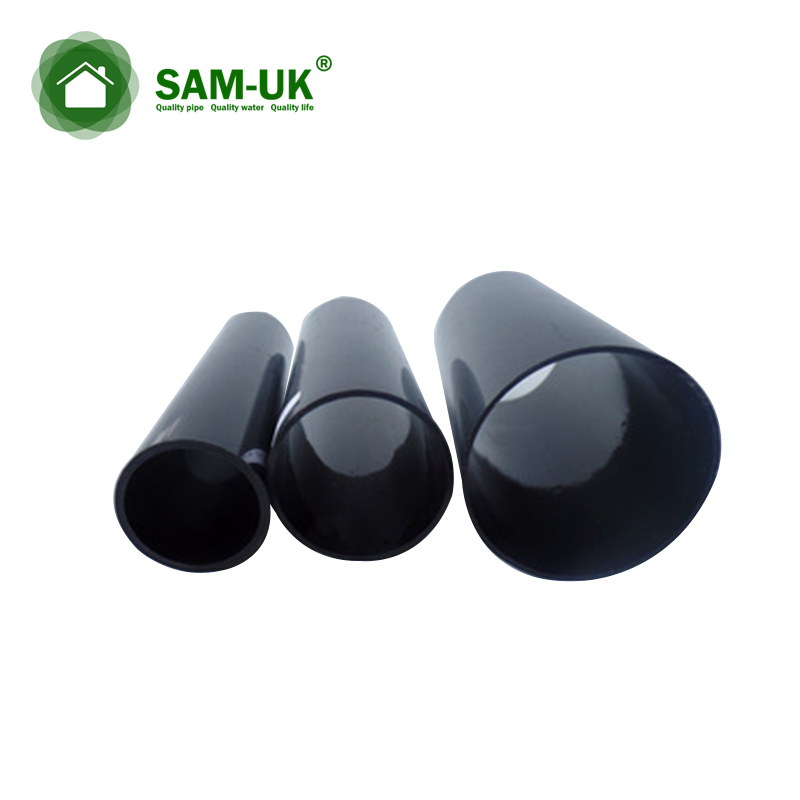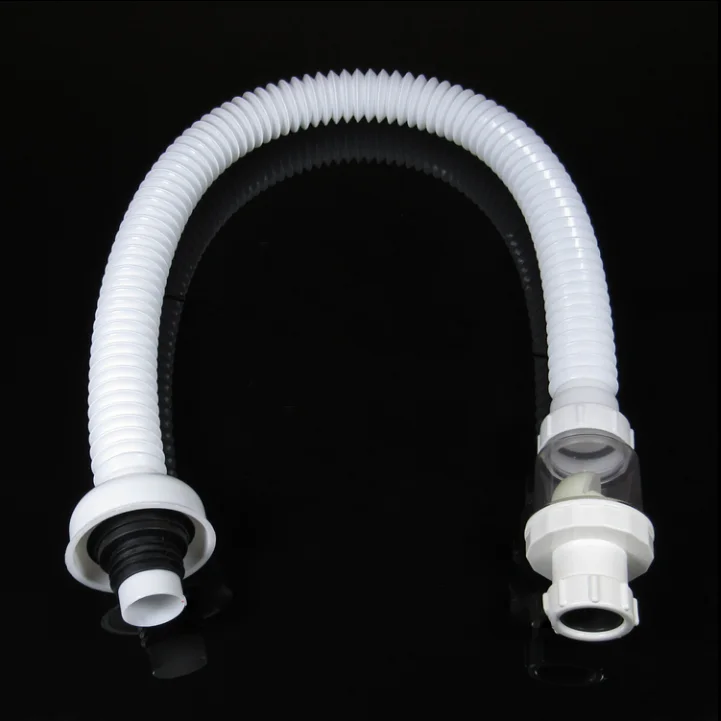This time, we’re going to talk about What Size Pvc Pipe For Bathroom Sink Drain. There is a lot of information about Plumbing Drain Pipe Size Chart on the internet, of course. Social media are getting better and better quickly, which makes it easier for us to learn new things.
Bathroom Sink Drain Pipe Size and Residential Sink Drain Pipe Size are also linked to information about Residential Sink Drain Pipe Size. As for other things that need to be looked up, they are about How To Measure Sink Drain Pipe Size and have something to do with what size pvc pipe for bathroom sink drain.

16 Things You Should Know About What Size Pvc Pipe For Bathroom Sink Drain | What Size Pipes For Bathroom Plumbing
- Old plumbing usually can remain; however, any new plumbing needs to meet code. If old galvanized pipes and gate valves cause low water pressure, you might need to change them in order to supply new pipes with enough pressure. Here, a ball valve has replaced a gate valve. - Source: Internet
- Use this chart to count the number of fixture units that will be connected to a drain line and for the minimum drain****pipe size. If a toilet connects to a drain****pipe, the pipe must be at least 3 inches. Check local building codes. - Source: Internet
- Once drain lines are assembled, an inspector will probably test to make sure they do not leak. Some inspectors will simply pour water through the pipes. Other inspectors require that the line be plugged with an inflatable drain plug and the system filled with water. - Source: Internet
- Valves, fixture controls, cleanouts, and compression pipe fittings must not be covered by a wall or floor surface in case you need to work on them in the future. If necessary, install an access panel. The most common location for an access panel is behind a tub or shower. - Source: Internet
- These pipes run from the distribution pipes to the fixtures. As a general rule, you can run ½-inch pipe to most fixtures; run ¾-inch pipe to a hose bib or a water heater. Different fixtures place different demands on supply pipes. Each fixture has a demand rating based on fixture units (see chart). - Source: Internet
- Common codes mainly focus on venting. After all, drain****pipes that are not properly vented will run sluggishly and could release noxious fumes into the house. Here are some other important plumbing code considerations to keep in mind during your remodel: - Source: Internet
- A drain cleanout provides a convenient access point to a pipe. Plumbing codes call for cleanouts at various points so drains can be easily augered in case of a clog. You can simply remove the cap to access the blockage or debris inside the pipe. To be safe, install a cleanout whenever you tap into a drain line unless there is already one nearby. - Source: Internet
- When changing pipe materials, use the correct transition fitting. Without a dielectric union (shown above), the joint between galvanized and copper pipe would quickly corrode. Use the approved fitting when changing from plastic to copper, cast iron to plastic, and ABS to PVC. - Source: Internet
- List fittings in detail on your plumbing plan so you will be sure to purchase the right ones. Be sure to use special drain fittings, such as a closet bend, so wastewater can flow smoothly. Inspectors will have specific fitting requirements for different fixtures. - Source: Internet
- In most cases, drain****pipes must slope at least 1/4 inch per running foot. Running a drain across a room that does not have a basement or crawlspace might call for careful calculations. Codes might require that vent pipes slope 1/8 inch per foot. Some codes allow level vents. - Source: Internet
- Water hammer arresters might be required for appliances such as a washing machine. Supply pipes could need to be cushioned wherever they run through or against a framing member. This helps prevent pipes from shaking or clanging against each other when the water flow suddenly stops. A water hammer arrester ($16, The Home Depot) creates a cushion of air that helps absorb the shock. - Source: Internet
- Cutting a notch in a joist greatly weakens it. Whenever possible, bore holes through joists instead. This calls for careful work as holes for a drain****pipe must be at slightly different levels so the pipe will slope. Whether notched or bored, long spans will likely need doubled joists. - Source: Internet
- The installation of plumbing must not weaken the structure of a house. The inspector can require that you reinforce joists that have been cut to accommodate pipes. Other requirements include the use of fire caulking around pipes and placement of protective plates over pipes. - Source: Internet
- Use approved clamps or straps to secure pipes. According to most codes, copper supply pipe must be supported every 6 feet, galvanized or black steel pipe every 12 feet, PVC or ABS drain****pipe every 4 feet, and cast-iron pipe every 5 feet. To be safe, install more supports than are required. - Source: Internet
- A bathroom sink uses a 1¼-inch trap. Showers and floor drains use 2-inch traps. All other fixtures and appliances use 1½-inch traps. - Source: Internet
- Pipes that are glued without primer eventually will leak. Apply primer when joining PVC pipes to ensure a secure hold. Some plumbing codes require you to verify that primer was used. Choose a purple-colored primer ($10, The Home Depot) so the inspector can quickly tell that the pipes have been sufficiently primed. - Source: Internet

Here are a few tips to help you find information about What Size Pipes For Bathroom Plumbing:
- Look for good places to get information about How To Measure Sink Drain Pipe Size. This can be done in libraries, on websites, or even by paid journalists.
- When looking for information about Must-Know Plumbing Codes for a Successful Remodel, it’s important to know that there are different kinds of online sources, like Google and YouTube. Social media sites like Facebook and Twitter are also good places to look for information about what is the size of pvc pipe used for bathroom sink drains.
Video | What Size Pvc Pipe For Bathroom Sink Drain
To get the best information about What Size Pvc For Bathroom Sink Drain, you should read to find out how true each source is.
This article has a few videos from different places about How To Measure Bathroom Sink Drain Size that will help you learn more about it. The Internet is a great place to find out about a wide range of things.
## Here are some crucial aspects concerning what is the size of pvc pipe used for bathroom sink drains:- What Size Pvc Pipe For Bathroom Sink Drain
- What Is The Size Of Pvc Pipe Used For Bathroom Sink Drains
- What Size Pvc For Bathroom Sink Drain
- Bathroom Sink Drain Pipe Size
- Residential Sink Drain Pipe Size

With so many websites and forums that talk about Bathroom Sink Drain Pipe Size, it shouldn’t be hard to find what you need.
Most people are used to getting information about Must-Know Plumbing Codes for a Successful Remodel in a very different way than this. It lets you look at the information about How To Measure Sink Drain Pipe Size and how it can be used in more detail.
 ways to put information about Can I Use 1 1/2 Drain For Bathroom Sink in a way that looks good and is useful. They can be used in business and marketing, and they can also be used to talk about How To Measure Sink Drain Pipe Size. So, we also give you some pictures about Residential Sink Drain Pipe Size.
ways to put information about Can I Use 1 1/2 Drain For Bathroom Sink in a way that looks good and is useful. They can be used in business and marketing, and they can also be used to talk about How To Measure Sink Drain Pipe Size. So, we also give you some pictures about Residential Sink Drain Pipe Size.
In the end, this article gives a summary of Residential Sink Drain Pipe Size. Also talked about are Plumbing Drain Pipe Size Chart and what is the size of pvc pipe used for bathroom sink drains, which you can use to compare how much you know about What Size Pipes For Bathroom Plumbing.